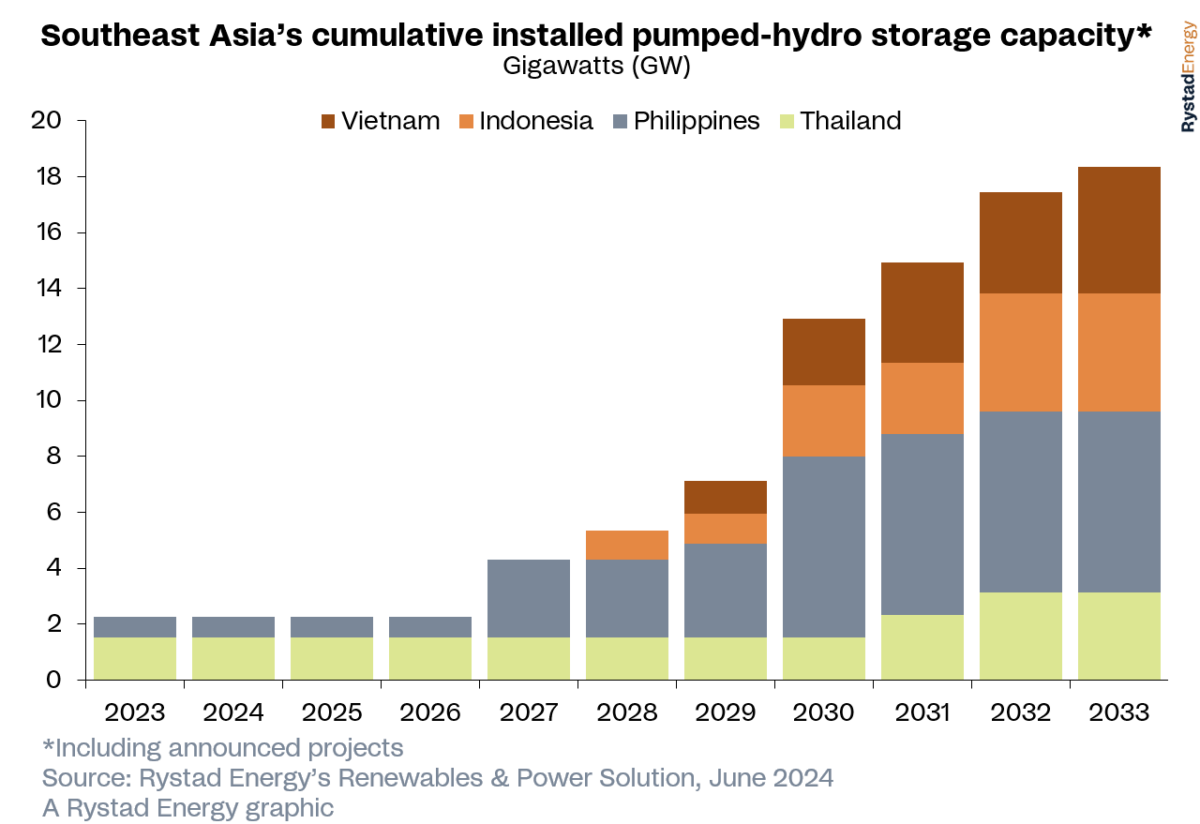Rystad Energy projects pumped hydro capacity in Southeast Asia to surge from 2.3 GW currently to 18 GW by 2033, representing a nearly eightfold increase in less than a decade, and attracting an estimated total investment of between $12 billion and $70 billion.
With 64% of the region’s power generation coming from fossil fuels, reliable and green energy storage solutions are crucial to enhance electricity system flexibility, particularly as more renewable energy sources like solar and wind become integrated.
Currently, 2.7 GW of pumped hydro storage is under construction, with the remaining 13.3 GW in various stages of development. This expansion will diversify the region’s renewable energy landscape, currently centered on the Philippines and Thailand. While Thailand boasts the most existing capacity for now, the Philippines will soon surpass it with about 5.7 GW of capacity in the pipeline, stated Rystad analysts.
Other countries in the region investing in pumped hydro include Vietnam and Indonesia, which boast about 4.5 GW and 4.2 GW of pending capacity, respectively. Thailand will also contribute to the region’s growth through 2033, with an additional 1.6 GW slated for development.
State-owned utility companies dominate pumped hydro projects in most of Indonesia, the Philippines, Vietnam and Thailand. This trend is evident with the top three developers in Southeast Asia, all of which have significant government ownership. Indonesia’s state-owned utility company PLN is the leading developer in the region, with 3.7 GW pumped hydro projects in the pipeline.
According to Rystad analysts, high upfront costs and the long time it takes to see a return on investment make pumped hydro projects less attractive to private companies. Additionally, the licensing process can be unpredictable, dragging out project timelines and adding risk for potential developers.
The Philippines, however, bucks this trend. Unlike its neighbors, the nation has an unbundled electricity market, meaning there’s competition in both power generation and distribution. This competition creates volatile wholesale electricity prices, which can fluctuate more than in regulated markets. This presents an economic incentive for pumped hydro storage, making it a more attractive option for developers in the Philippines.
This content is protected by copyright and may not be reused. If you want to cooperate with us and would like to reuse some of our content, please contact: editors@pv-magazine.com.









3 comments
By submitting this form you agree to pv magazine using your data for the purposes of publishing your comment.
Your personal data will only be disclosed or otherwise transmitted to third parties for the purposes of spam filtering or if this is necessary for technical maintenance of the website. Any other transfer to third parties will not take place unless this is justified on the basis of applicable data protection regulations or if pv magazine is legally obliged to do so.
You may revoke this consent at any time with effect for the future, in which case your personal data will be deleted immediately. Otherwise, your data will be deleted if pv magazine has processed your request or the purpose of data storage is fulfilled.
Further information on data privacy can be found in our Data Protection Policy.